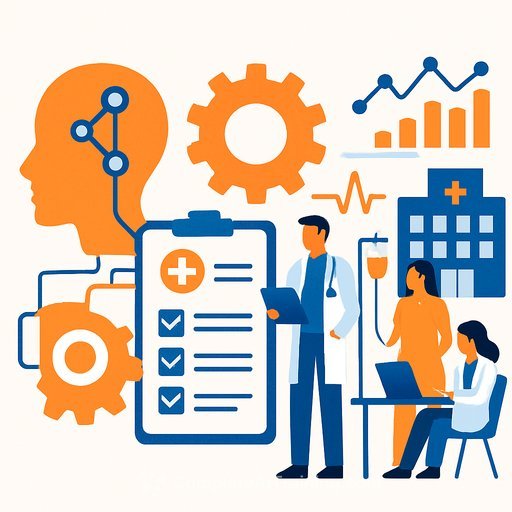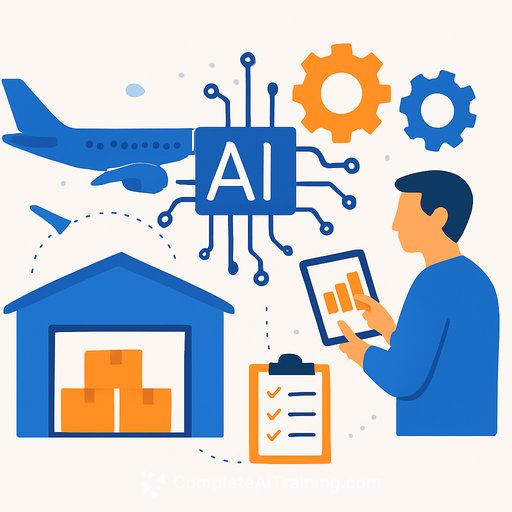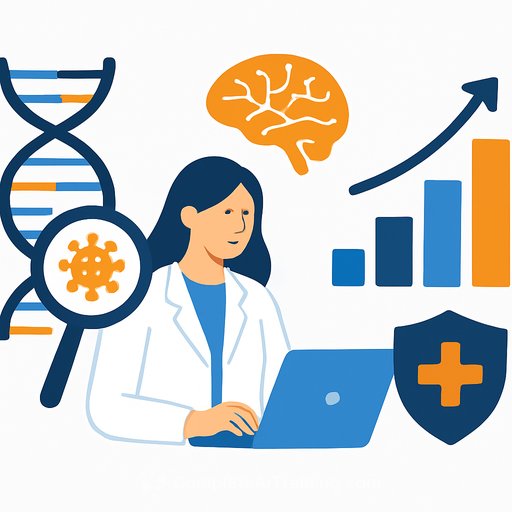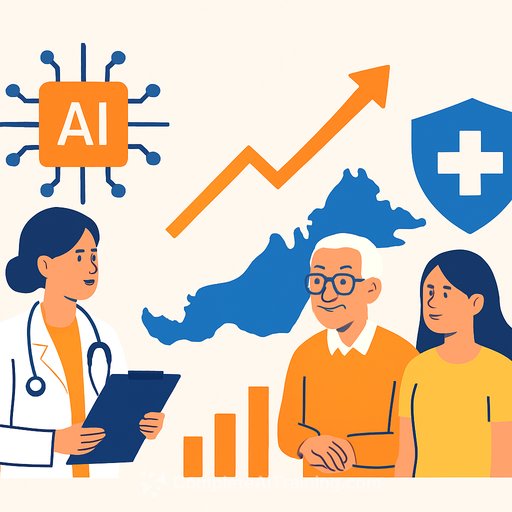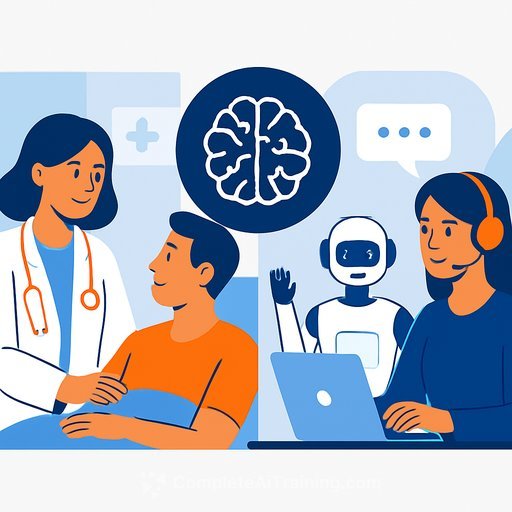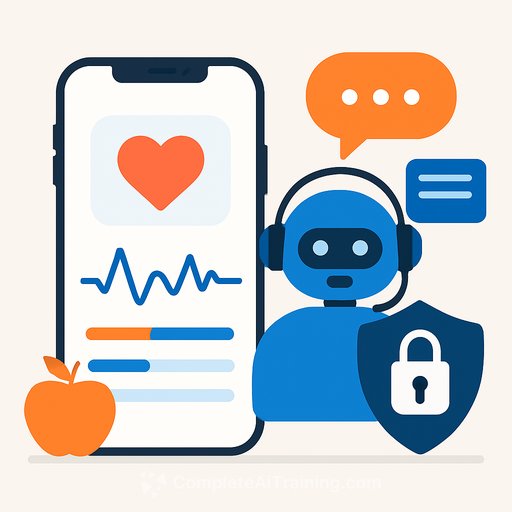The Impact of AI and Automation on Modern Healthcare Operations
October 31, 2025
AI and automation are changing how healthcare runs behind the scenes. For operations leaders, the mandate is simple: improve accuracy, reduce waste, and move faster without risking patient safety. Here's a practical playbook you can use right now.
Enhancing Diagnostic Accuracy
Machine learning models can scan imaging, labs, and EHR data to spot patterns clinicians may miss. Earlier detection of cancers, cardiac issues, and sepsis improves outcomes and reduces length of stay.
- Use cases: imaging triage, sepsis early warning, pathology pre-screening
- KPIs: sensitivity/specificity, time-to-diagnosis, false-positive rate, escalation-to-treatment time
- Operations tip: pilot with a single pathway (e.g., chest X-ray triage) and compare model outputs to current workflows before scaling
If you're evaluating solutions, insist on bias testing and clear model provenance. Require human-in-the-loop sign-off on high-risk decisions.
Streamlining Administrative Tasks
Scheduling, prior auth, billing edits, and records management are ripe for automation. Offload repetitive work so staff can focus on patient-facing tasks.
- Quick wins: no-show prediction with auto outreach, claim scrubbers, auto-coding suggestions, referral routing
- KPIs: denial rate, clean-claim rate, days in A/R, no-show rate, first-contact resolution
- Guardrails: audit trails for every automated action; monthly exceptions review with revenue cycle leadership
Personalizing Patient Care
Predictive analytics can flag rising-risk patients and recommend interventions before issues escalate. Personalization improves adherence and lowers readmissions.
- Use cases: care gap alerts, medication adherence nudges, risk scoring for chronic disease
- KPIs: readmission rate, care gap closure time, intervention acceptance rate
- Workflow: risk flag → nurse review → outreach script → document outcome in EHR
Improving Treatment Outcomes
Data-driven care plans reduce trial-and-error. Precision approaches align therapies with patient history, genetics, and lifestyle data.
- Use cases: oncology regimen selection, antibiotic stewardship, rehab plan optimization
- KPIs: time-to-therapeutic-response, adverse event rate, cost per episode
- Policy: clinician override remains default; model suggestions are advisory with rationale shown
Supporting Clinical Decision-Making
Decision support tools surface evidence at the point of care. They speed up differential diagnosis and standardize quality.
- Use cases: order set recommendations, drug-drug interaction checks, documentation support
- KPIs: guideline adherence, alert acceptance rate, alert fatigue (override rate), time-to-order
- Governance: quarterly review of top alerts; retire low-value prompts to cut noise
Optimizing Resource Allocation
Forecasting models improve staffing, bed management, and supply readiness. Anticipation beats reaction.
- Use cases: ED volume prediction, OR block utilization, inpatient bed flow, supply PAR optimization
- KPIs: bed occupancy, LWBS, OR utilization, average boarding time, stockouts
- Playbook: daily huddles review forecasts → adjust staffing and discharge plans → track variance
Advancing Telemedicine
AI-enabled triage and remote monitoring extend care beyond the facility. Data from wearables can trigger timely interventions.
- Use cases: virtual urgent care triage, RPM for CHF/COPD/diabetes, asynchronous dermatology
- KPIs: virtual visit completion rate, escalation rate to in-person, RPM alert-to-action time
- Integration: pipe device data into the EHR with standardized thresholds and clear escalation paths
Enhancing Patient Engagement
Chatbots and automated nudges improve follow-through. Patients get reminders, education, and support without extra staff hours.
- Use cases: pre-op prep checklists, medication reminders, post-discharge care plans
- KPIs: message open rate, adherence rate, patient-reported outcomes, CAHPS measures
- Content: keep messages short, specific, and actionable; include a fast path to a human
Ethical Considerations
Fairness, explainability, and privacy aren't optional. Build guardrails into your operating model.
- Bias: test models across age, sex, ethnicity, language; track performance deltas
- Transparency: document data sources, training methods, and known limitations for each model
- Privacy: align with HIPAA and local regulations; minimize data access to least-privilege
Useful references: WHO guidance on AI ethics in health and the FDA's AI/ML SaMD resources.
A 90-Day Implementation Plan
- Days 1-30: pick one high-impact workflow (e.g., claim denials). Define success metrics and current baseline. Map data sources and owners.
- Days 31-60: run a shadow pilot. Compare model outputs to current decisions. Capture exceptions and clinician feedback.
- Days 61-90: limited go-live with audit logging, clear escalation rules, and weekly KPI reviews. Prepare a scale plan based on results.
Risk and Governance Checklist
- Model registry with owner, version, data lineage, and intended use
- Human-in-the-loop for high-risk actions; documented override policy
- Quarterly performance and bias audits; retire underperforming models
- Security review: access controls, PHI minimization, incident response
- Change management: stakeholder training, communication, and feedback loops
Future Prospects
Expect broader use of ambient clinical documentation, digital twins for capacity planning, and integrated command centers that tie forecasts to real-time actions. The winners will combine strong data foundations with tight, measurable workflows.
Upskilling Your Team
Equip managers, analysts, and clinicians to work with AI safely and effectively. Structured training accelerates adoption and reduces rework.
- Start with practical courses focused on automation and healthcare workflows
- Standardize on a common vocabulary and governance playbook
Helpful resource: AI Automation Certification for operations teams.
Conclusion
AI and automation can raise diagnostic accuracy, cut administrative waste, and keep patients engaged. The upside is real if you deploy with guardrails, measure what matters, and scale what works. Start small, prove value, and build momentum one workflow at a time.
Your membership also unlocks:

